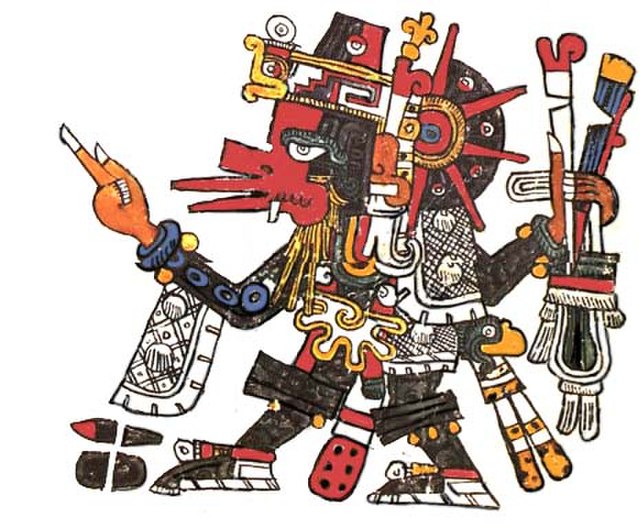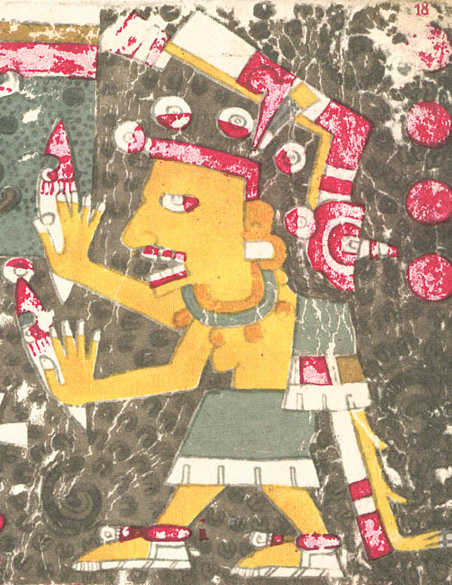TWH – We were going about our day at The Wild Hunt yesterday when a story about new research on ancient Aztec death whistles popped on the science radar. We took a look because blood-curdling screaming seems very appropriate given the season and current events. The new research, published yesterday in Communication Psychology, experimentally investigates the emotional and acoustic effects of ancient these amazing ancient, Indigenous instruments.
Aztec death whistles produce an eerie, wailing sound resembling a human scream or howl, intended to provoke fear or awe. They are often small, intricately carved ceramic whistles designed to be held in one hand. When blown, they emit a high-pitched, haunting shriek that many describe as bone-chilling or reminiscent of human agony.
The sound of the Aztec death whistle is among the most chilling noises imaginable, often described as resembling a shrieking, otherworldly wail. Some scholars suggest they may have been used by warriors to create a terrifying atmosphere on the battlefield, overwhelming enemies with the collective scream of multiple whistles. Visually, the skull imagery might represent Mictlantecuhtli, the Aztec Lord of the Underworld, hinting at a connection to sacrificial practices, including human sacrifice.
The whistles were reportedly first discovered only 25 years ago. In 1999, archaeologists discovered the remains of a 20-year-old sacrificial victim holding one of the whistles in his hands. This find took place in a temple dedicated to Ehecatl, the wind god, in Tlatelolco, leading some scholars to propose that the whistle’s sound was intended to mimic the howling wind. The contexts in which these skull whistles have been found since are typically ritual burial sites again involving sacrifices and suggesting = they may have had a role in ceremonies symbolizing descent into Mictlan, the Aztec underworld. Mictlan’s fifth level was said to be filled with deadly, piercing winds, potentially tying the whistles’ chilling sound to this mythological journey—a theory called the “ritual symbolism hypothesis.”

Quetzalcoatl Ehecatl from the Codex Borgia [public domain
The Aztecs were known for creating instruments that imitated the sounds of nature, such as wind, rain, and animal calls, as well as human screams. Many of these instruments were used in rituals, suggesting the death whistle was part of a tradition of using sound to evoke spiritual or natural forces in ceremonies. But why this type of whistle and why this type of sound?
“Skull whistles can produce softer hiss-like but also aversive and scream-like sounds that were potentially meaningful either for sacrificial practices, mythological symbolism, or intimidating warfare of the Aztecs.” Wrote the research team from the Department of Psychology, at the University of Oslo in Norway and the Cognitive and Affective Neuroscience Unit at the University of Zurich in Switzerland. “However, solid psychoacoustic evidence for any theory is missing, especially how human listeners cognitively and affectively respond to skull whistle sounds.”
In other words, they wanted to test the effects of the death whistles on human participants.
Research obtained Aztec skull whistles from various museums and measured their sounds. They also constructed replicas using CT images as well as gathered other Aztec instruments to provide comparison references. They found little difference wilh the replicas and the original whistles but were able to isolate their sounds from the animal sound mimicked by other traditional instruments.

Mictlancihuatl from the Codex Borgia [Public Domain
They also concluded that the acoustic clusters “consisted of animal sounds (insects, bovidae), human voices, and chainsaw sounds. It thus seems that skull whistles were acoustically close to other sounds with an intended acoustic and symbolic iconography, and to sounds that potentially provoke alerting, startling, and affective responses in human listeners.”
The skull whistles were producing frightening screeches which allowed them to move on to testing them with human participants, though noting the important differences in the population such as different cultural norms from the original listeners of the whistles and, of course, the different historical periods. However, the researchers noted, “All listeners in our experiences were naïve about the presence of skull whistle sounds on the acoustic samples presented in the experiments, and thus all data are largely unbiased and basic assessments of the psychoacoustic effects of skull whistles.”

Aztec Death Whistle [Photo Credit: Jennysnest CCA-SA 4.0
In other words, the human participants had no idea what they were about to hear.
They proceeded to examine how people react emotionally to the sounds of Aztec skull whistles. Participants rated the sounds as highly negative, describing them as “scary” and “unnatural,” with a moderate sense of urgency. This intense, unsettling effect likely triggers an immediate response, engaging specific brain areas associated with alertness. When listeners were asked to label the sounds, they often guessed natural or eerie origins, revealing how these sounds might prompt powerful reactions and associations.
Brain scans confirmed the effect. Skull whistles combine natural and artificial qualities, evoking strong, negative emotional responses that capture attention and disrupt typical thought processes. That is, the neuro-cognitive disruptive effects were objectively observable rather than only subjectively reported.
So, the whistles could have been used in various applications to instill terror. The researchers noted that more investigations will be needed to confirm their findings.
In other words, they’ll be trying this again on new human participants.
If you are curious about the sound, were able to locate this recording: Instituto Virtual de Investigación Tlapitzcalzin
The Wild Hunt is not responsible for links to external content.
To join a conversation on this post:
Visit our The Wild Hunt subreddit! Point your favorite browser to https://www.reddit.com/r/The_Wild_Hunt_News/, then click “JOIN”. Make sure to click the bell, too, to be notified of new articles posted to our subreddit.